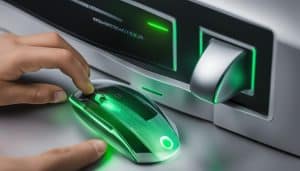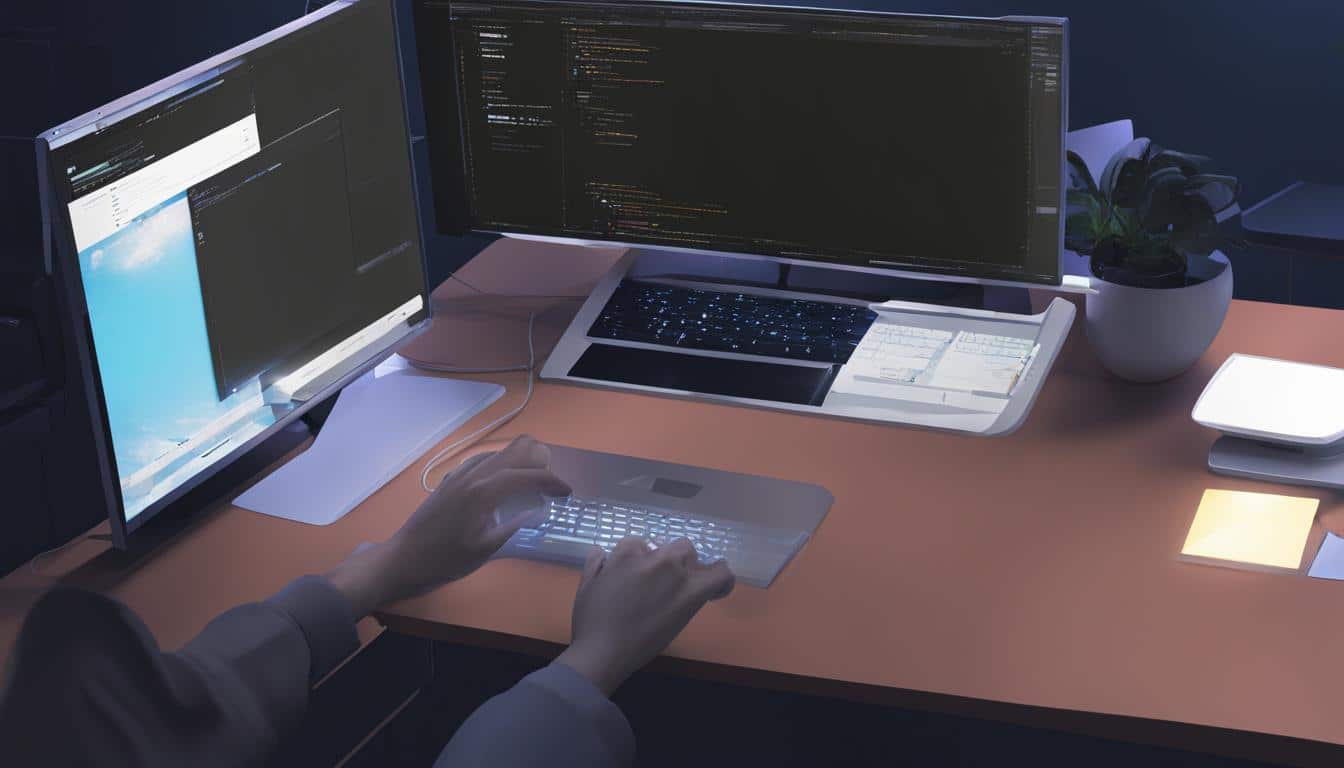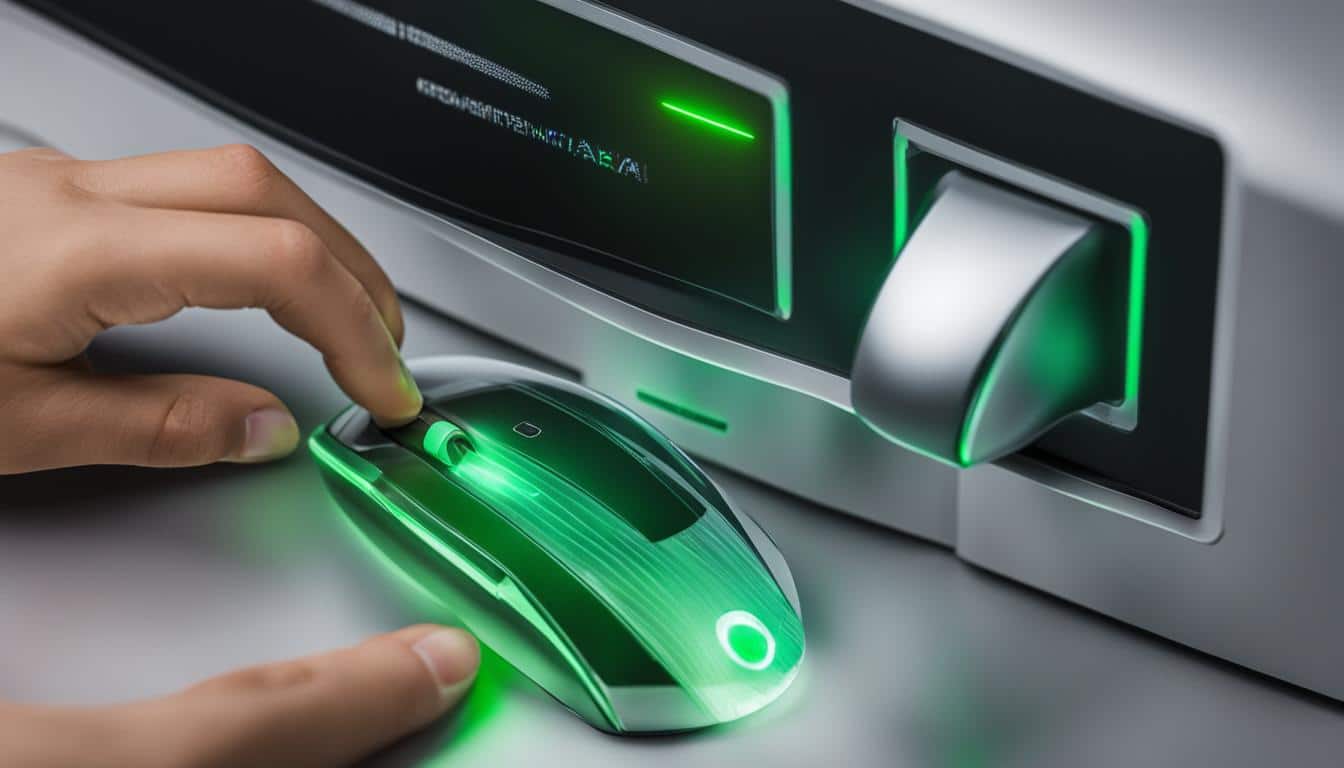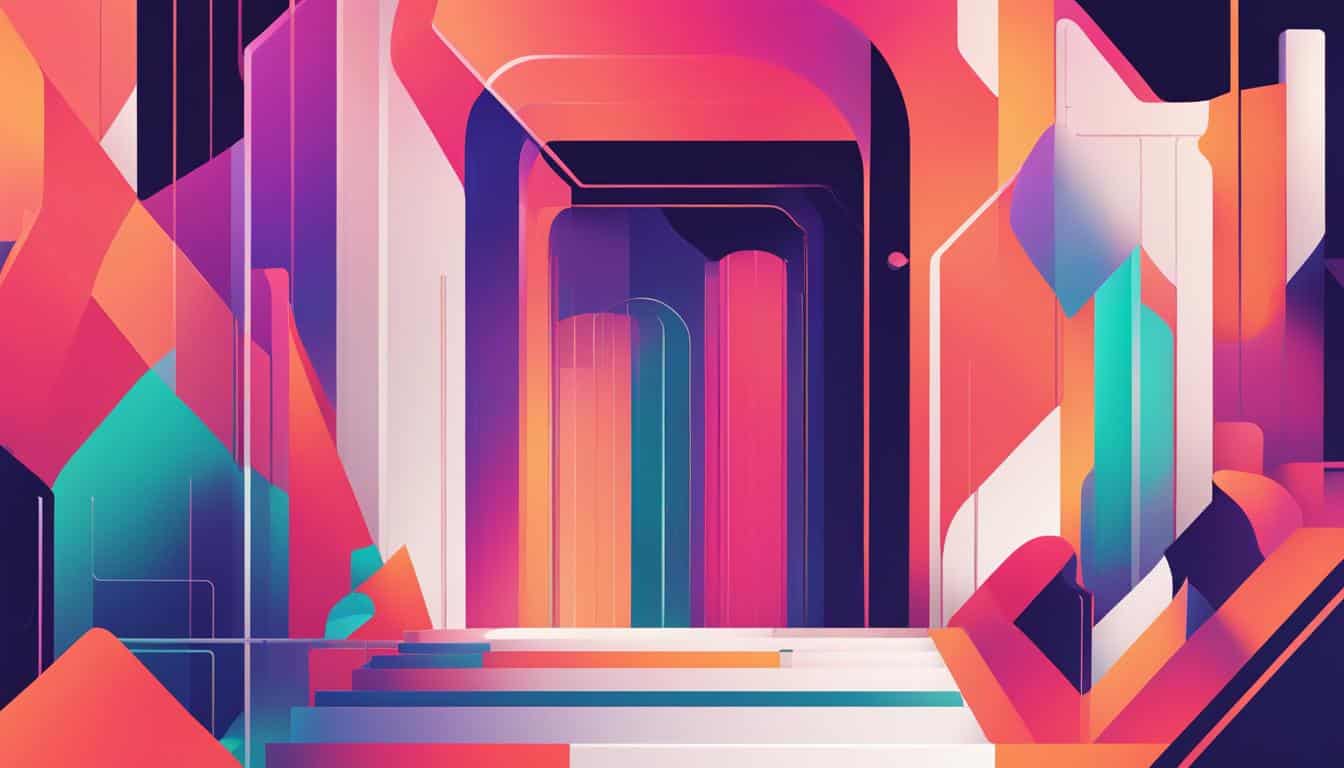Introduction to Digital Art
Digital art is taking the world by storm! Technology and demand for modern aesthetics are driving its rise in popularity. It’s more accessible and convenient than traditional mediums, giving artists more innovative tools.
Plus, social media makes it easy to share work and gain exposure. Aspiring artists can find new opportunities. But this genre isn’t without critics. Some argue that it lacks the tactile experience of traditional methods.
Still, digital art is pushing boundaries and challenging conventions. It offers limitless creative control and the potential to reach a global audience. Gisel Florez swapped her traditional paints for an iPad Pro, allowing her to create art on-the-go during her travels.
So, why paint with a brush? Digital art: tech meets creativity. Unique and captivating!
Advancements in Technology Driving Digital Art Popularity
Digital art is increasingly gaining popularity and advancements in technology are catalyzing this trend. With technological advancements, artists now have access to a plethora of digital tools and software, enabling them to create art that is both visually stunning and interactive. The ability to create digitized versions of traditional art forms, as well as new forms of art, is fueling the growth of the digital art industry.
This digital art revolution is also being driven by the accessibility of digital platforms. Artists can now easily showcase their art online, connecting them with a wider global audience. The internet and social media platforms have created a digital art community, providing a space for artists to share their work, collaborate with others and gain exposure.
Another aspect that is contributing to the popularity of digital art is its unique ability to blend reality and imagination in a seamless manner. Digital art can portray surreal and abstract themes in a way that traditional art forms cannot. This unique form of expression is becoming increasingly popular to both artists and viewers alike.
While there are still some skeptics about the validity and value of digital art, true stories of artists who have harnessed the potential of digital tools to create revolutionary art are emerging. These stories showcase the limitless potential of digital art and how it is producing masterpieces that are both aesthetically pleasing and technologically advanced.
Digital art is a rapidly growing field that is transforming the way we create and appreciate art. Through the use of advanced technology, we are witnessing an explosion of creativity and imagination that is taking art to new heights. As technology continues to advance, we can only expect the demand and interest in digital art to continue to soar.
Artists no longer need to rely on physical tools like paint brushes when they have the power of a digital pen in their hands.
Emergence of Powerful Digital Tools
Artists are experiencing the revolutionary power of digital tools, allowing them to explore their creativity and produce mesmerizing digital art. This has caused a surge in digital art’s popularity.
These tools, such as digital brushes, let artists move shapes, patterns, textures and colors in ways never seen before. Furthermore, new software programs provide 3D rendering and image manipulation, making it easier for artists to create quality work.
The cloud allows for collaboration and sharing of work globally. Artists can now modify images using shared resources like brushes and layers.
To further progress the growth of digital art, here are some ideas:
- Facilitate places for creators to gather, like workshops or webinars hosted by different organizations.
- Provide funding opportunities that emphasize traditional skills combined with new technology-driven techniques.
- Multi-genre events such as exhibitions or competitions showcasing both traditional and digital artwork can generate greater interest and celebrate varied forms of creativity.
It seems anyone can become an artist with a laptop, a dream, and the power of the internet!
Ease of Access to Digital Art Equipment
Access to digital art equipment has made digital art more popular. It’s now easier for artists to get graphic tablets and software at affordable prices. This has made it easier for aspiring creatives and hobbyists to pursue their artistic talent.
Moreover, there are many online communities for artists to share and promote their work. Social media has made it easier for artists to get noticed and reach a large audience.
Technology has enabled new forms of creative expression. Artists have more flexibility and precision when creating art pieces. For example, 3D modeling software lets them work on virtual sculptures with intricate detail.
Industry experts at ArtStation.com say digital art marketplaces have seen significant growth in the past decade. These marketplaces give customers access to digital art from leading artists across the world.
Technology keeps advancing, resulting in more innovative ways for artists to use these tools and create visual experiences. Digital art has endless possibilities!
Versatility of Digital Art
Digital Art’s Infinite Possibilities
Digital art has gained immense popularity in recent years due to its infinite possibilities. It offers plenty of creative options, speed, convenience, and cost-effective techniques to a wide range of users. As digital art uses various software, tools, and hardware, it allows artists to experiment and express their creativity without any limitations. Moreover, it helps in the efficient production of art with greater consistency and easier distribution.
Versatility of Digital Art
Uses of digital art are diverse and extend from entertainment to education, and even in Medicine. It means that digital art can serve various purposes with just one artwork. In the entertainment industry, it serves to create visually stunning animation, video games, and movies. In education, it makes illustrations and 3D models to explain complex concepts in a simplified manner. In medicine, it assists doctors and scientists to visualize the human anatomy and medical operations accurately.
Unique Details
Digital art provides endless possibilities for the creation of various art forms that traditional mediums cannot offer. It allows artists to experiment with different modes of expression, including video art, generative art, interactive art, and others. Moreover, it enables artists to digitize their traditional artwork without losing its authenticity. It is a strong tool for artists who want to express their opinions about social, cultural, and political issues, with lesser censorship than traditional art.
Call-to-Action
Don’t miss out on the opportunities that digital art brings! The current trend is moving towards a digital era, and it’s important not to miss it. Join the digital art revolution by exploring software and tools available for creating digital art. Art enthusiast or not, take advantage of the creativity and convenience that digital art provides.
Digital art allows for endless possibilities in creative expression, just like ordering fries with a side of onion rings.
Flexibility in Creative Expression
Digital art is highly adaptable and offers a vast canvas for creative endeavors. It has dynamic tools and techniques, which make it flexible for artistic expression. This enables artists to test and investigate new artistic depths. It can produce a range of styles, from delicate to extreme, adding depth to the artwork.
From classic painting to multimedia installations, digital art incorporates everything. It has no physical or territorial limits, so it can easily cater to an international audience. Moreover, software updates allow artists to keep up with the latest trends and design more imaginative artwork.
Additionally, digital art allows for easy corrections and modifications in design without damaging the composition. It is now an accepted visual mode of communication in different industries such as gaming, advertising, photography & films, providing many job opportunities.
Throughout history, art has had various stages and alterations. Digital art is non-traditional, but still follows in the footsteps of other movements, with its contribution to innovation. Its potential to spark imagination and creativity, alongside offering a platform, makes it stand out from other traditional art forms.
No more tears over spilled paint, just hit ‘undo’ and pretend it never happened.
Ability to Easily Modify and Manipulate Artwork
Digital art is renowned for its flexibility. It allows artists to make changes quickly and easily, leading to improved quality. Let’s look at a table which explains how digital art helps manipulate artwork.
| How Digital Art Helps | Examples |
|---|---|
| Unique Layers | Add or subtract elements |
| Non-Destructive Editing | Alter specific parts without influencing others |
| Undo/Redo | Revert from mistakes quickly |
| Customization | Adjust colors, lighting, contrast, etc. |
Not only this, digital art also increases productivity. Artists can preview their work instantly and replicate it endlessly. It was Susan Kare who in 1983, created computer graphics for Apple Computers. She emphasized more on pixel-based digital art instead of traditional forms.
Thanks to advancements in software and hardware, people are now able to create high-quality visuals for gaming, advertising, and more. Digital art offers immense flexibility to elevate creativity and achieve desirable results. It has become an integral part of the mainstream and is a great way to make money.
Digital Art in Mainstream Culture
Digital Art’s Emergence into Popular Culture
The increasing interest in Digital Art has propelled it into the mainstream culture. The proliferation of technology, including software and hardware, has provided artists of all abilities with tools to experiment with, create and showcase their artwork. An increasing number of individuals today are investing in digital art to protect their collections, as well as to broaden their collections of traditional art forms.
Digital Art provides a boundless space for creativity, with countless techniques that can be adapted and manipulated with ease. Artists are using digital platforms to create art that not only looks appealing to the eye but also pushes the boundaries of traditional art forms. Moreover, beginners of all ages can now pick up skills through online tutorials, without the need for a physical classroom. These rapidly accessible technologies have enabled Digital Art to gain recognition as a prominent art form in recent years.
The ease of accessibility to global digital art markets has transformed the traditional art industry. The elimination of intermediaries means buyers and artists can communicate directly, making transactions more affordable and accessible. It has also opened up opportunities for artists, especially those based in lesser-known regions, to expose their work to the global market.
A Fine Art auction house recently presented the first-ever Digital Art Sale and exhibition. This groundbreaking event demonstrated that the Digital Art industry is beginning to attract investors from the largest fine art institutions globally. The ease of access to digital artwork, coupled with increased recognition and acceptance, reinforces the notion that Digital Art is here to stay. Its emergence into mainstream culture has opened up artistic possibilities and elevated dialogue of what it means to be an artist in a digital era.
Digital art communities on social media: Where artists can showcase their work and trolls can critique it without even knowing how to draw a stick figure.
Social Media Platforms and Digital Art Communities
Social media is transforming digital art communities. Such platforms give artists an arena to show their works and viewers a new way to interact. Instagram and Tumblr are now popular with digital artists as they can reach a wider audience without a physical gallery.
These platforms also connect creators to each other, allowing them to exchange ideas and work together. Plus, tools like Instagram’s Stories provide viewers with exclusive content like studio visits, artist talks and sneak peaks of upcoming pieces, creating an immersive experience.
The boundaries between classic and digital art are fading as digital art is gaining mainstream acceptance. Examples like Christie’s and Sotheby’s incorporating digital art into their auctions shows how valuable it has become. Who needs physical art exhibitions when you can see digital ones?
Digital Art Exhibitions and Collaborations
Multi-disciplinary Approach: Digital art collaborations unite individuals from music, visual arts, video production, design and more. Resulting in creations that mix different mediums to create one unit.
Spectacular Installations: Art galleries and museums now feature large-scale interactive installations to engage the audience. They give visitors new experiences by combining technology with creativity.
Online Accessibility: As the world goes digital, online platforms give artists an opportunity to showcase their work and gain a global following.
Newfound Possibilities: With new tech coming out, the potential of digital art exhibitions is limitless. The sky’s the limit!
Pro Tip: Experiment and explore beyond traditional boundaries with Digital Art Exhibitions and Collaborations. Who says you need a canvas? Make a fortune selling pixels!
Economic Factors Driving Digital Art Popularity
The rise in demand for digital art can be attributed to various economic factors. The accessibility of digital art software and devices has lowered the cost of production, enabling more creators to enter the market. Additionally, the internet has made it easy to share and sell artwork, eliminating the need for intermediaries and reducing transaction costs. Moreover, the pandemic has created a surge in online art sales and a shift towards virtual exhibitions. This has led to increased demand for digital art, which has become a valuable investment opportunity for collectors. As the world continues to digitize, the future of digital art looks bright, offering limitless possibilities for creators and collectors alike.
For instance, a creator named John had been struggling to gain recognition for his traditional artwork. However, after switching to digital art, he was able to reach a wider audience and make more sales. He was even commissioned by a major brand to create a virtual art installation, which further boosted his career. This success story highlights the potential of digital art to transform the lives of creators and change the art industry as a whole.
“Creating digital art is like printing money, except you don’t need a printing press.”
Cost-Effective Production and Distribution
Going digital’s made art-making more cost-friendly. Cheeper equipment, simplified processes, no shipping, and user-friendly online platforms have opened up the world of art to more people. Less investment has increased accessibility and competition alike. Some artists have even earned a pretty penny just from selling on virtual forums – no extra marketing needed! It’s clear that digitization has its cost-effective advantages.
Increasing Demand for Digital Artwork
Tech advancements are boosting digital art’s fame among collectors and fans. Its accessibility, specialness, and range of styles are driving up demand. In this virtual age, it’s a way to express ideas imaginatively. This is why global digital art sales are rising.
Investors and collectors are putting money into online marketplaces, helping young artists. Blockchain is also supporting them by protecting their IP and bringing more patrons. This is growing the digital art market.
Digital art offers something new. With interactive installs or virtual worlds, you can explore the art with VR headsets. This opens up what art can represent.
Art Basel and UBS Global Art Market Report 2020 say art sales will go up 7% in 2021. Physical and online sales will mix, and prices will rise.
Digital art may have been slow to start, now it’s the internet’s Mona Lisa.
Conclusion: The Future of Digital Art and its Role in the Art World
Digital art is a major force in the art world. Artists are creating incredible works with digital media, due to its creative freedom and accessibility. It allows for new techniques and forms of expression. Digital art has a huge role in exhibitions and gallery shows.
Technology is driving this trend. Traditional art is still prominent, but digital art is catching up. Forbes magazine reports that sales of digital art have increased by 15% year-over-year. This shows the potential of this genre.
Q: What is driving the popularity of digital art?
A: The rise of digital technologies and the increasing accessibility and affordability of digital tools have contributed to the growing interest in digital art. Additionally, the emergence of online marketplaces for selling digital artwork, such as NFT platforms, has also played a role in the increasing popularity of digital art.
Q: Who are digital artists?
A: Digital artists are artists who use digital tools, such as computers, tablets, and software, to create artwork. They may use a variety of techniques, including digital drawing and painting, motion graphics, and 3D modeling.
Q: What are NFTs?
A: NFTs, or non-fungible tokens, are unique digital assets that are stored on a blockchain, a decentralized digital ledger. NFTs are often used to create digital art, as they allow artists to verify the ownership and authenticity of their work, as well as sell it as a unique, one-of-a-kind asset.
Q: What is NFT digital art?
A: NFT digital art is artwork that is created and sold as an NFT, or non-fungible token. This means that the artwork is stored on a blockchain and can be owned, bought, and sold as a unique digital asset.
Q: What is installation art?
A: Installation art is a type of contemporary art that is created to be displayed in a specific space, such as a gallery or museum. It often involves large-scale, immersive installations that are designed to engage the viewer’s senses and create a unique experience.
Q: How do digital artists use digital technologies to create art?
A: Digital artists use a variety of digital tools and techniques to create their artwork, including digital drawing and painting software, 3D modeling and animation software, and motion graphics programs. They may also use specialized hardware, such as pen tablets and graphics tablets, to create their work.
Q: How is digital art used in advertising?
A: Digital art can be used in advertising to create eye-catching visuals and communicate a message in a unique and creative way. It can be used to create digital ads, social media campaigns, and other digital marketing materials.
Q: What is the metaverse?
A: The metaverse is a term used to describe a virtual shared space where people can interact with each other and with digital content in real-time. It is often used in the context of virtual reality and other immersive digital experiences.
Q: How has blockchain technology impacted the digital art world?
A: Blockchain technology has had a significant impact on the digital art world by allowing artists to create, verify, and sell digital assets as unique, one-of-a-kind items. It has also helped to eliminate issues of fraud and piracy in the digital art marketplace.
Q: What are some examples of digital installation art?
A: Digital installation art can take many forms, including interactive installations with projected or digital elements, virtual reality experiences, and immersive video installations. Some examples of digital installation art include Rafael Lozano-Hemmer’s “Pulse Room,” Doug Aitken’s “Mirage,” and Jenny Holzer’s “For SAAM.”










